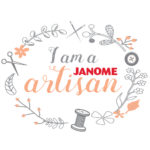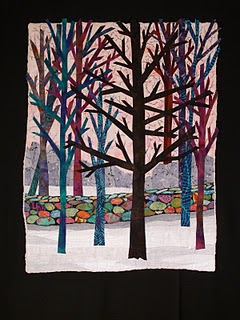Design! A Lively Guide to Design Basics for Artists and Craftspeople
February 24th, 2007For today’s post, I thought I’d review Design! A Lively Guide to Design Basics for Artists and Craftspeople by Steven Aimone (If you click on the title, it will take you to the listing for the hardback at Amazon; I notice that it is due out in April in paperback, but the cost difference –$4– is so little, go for the hardback!).
The thing I like most about this book is that Aimone goes beyond traditional art media (oils, acrylics, watercolors and sculpture) to look at design EVERYwhere: the endpapers have a photo of a stovetop! Items used to illustrate various design principles include: paintings, sculpture, masks, jewelry, hair, olive oil can, chairs and flowers, baskets, mud huts, quilts, advertisements, toiletries, architecture, the Apple iMac, photographs (including one of a decorated camel), even food!
I can’t decide if this is supposed to be a textbook or a coffee table book: the production values are so good that it is eye-candy as well as informative. I have long said good sewing is good sewing, whether you are making a garment, a quilt, or household items. Similarly, good design is just that: good design. It doesn’t matter if it is a painting, a quilt, a landscape, an interior, a building. The basic principles of design apply across all media.
The book covers:
- Introduction
- 1. The Purposes of Design
- 2. The Design Process
- 3. Visual Elements
- 4. The Design Space
- 5. Repetition of Motif
- 6. Rhythm
- 7. Symmetrical Arrangements
- 8. Asymmetrical Arrangements
- 9. Focal Emphasis
- 10. Underlying Shapes
- 11. Critique
- Glossary of Design Terms
- Artist Index
- Index
Many quilters are intimidated by terminology from the art world, but (pet peeve / soapbox moment coming) it is just words! Just as we learned what Log Cabin, fat quarter, scant quarter inch and Baltimore Album mean, we can learn color vocabulary: complementary, analogous, tint/shade/tone, and we can learn art vocabulary: focal point, rhythm, harmony, line and more. It’s just words, we’re all smart, so we can learn to use the art terminology and better understand our own art form.
I loved Aimone’s straightforward description in the introduction: Simply put, design is the arrangement of visual elements in a space. (p. 10) And the illustrations for that page are a quilt and an oil painting by Piet Mondrian!
Unlike many traditional design books, Aimone also talks about texture: actual and imaginary, as pattern, as weight and emphasis, and as subject. Pages 54-55 are part of that discussion:
If you’re interested in learning more about why some designs work, some don’t, how to create better compositions, and how to troubleshoot your own pieces, this is a fantastic book that really gets you to thinking beyond the quilt world. And, it gives you exercises to try to help implement what you’ve just learned.
Highly recommended!
Publishing information:
Aimone, Steven. Design! A Lively Guide to Design Basics for Artists and Craftspeople. 2004 Lark Books, New York. ISBN 1-57990-349-5 (hard cover).

